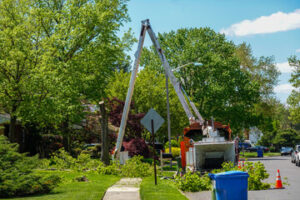Whether you’re planning on painting your home or simply want to give it a fresh coat of clean water, a pressure wash will likely be necessary. It’s not just for looks—it’s also important to help prevent damage, illnesses and other issues. For professional help, contact Pressure Washing Winston Salem.

Wear protective gloves and close-toed shoes to avoid getting hit by a direct pressurized spray. A black nozzle with a 65-degree spray produces a gentler wash, while a turbo nozzle (red) creates a spinning zero-degree stream for powerful cleaning.
Power washing removes harmful substances like mildew and mold from surfaces that could otherwise lead to deterioration. It also gets rid of stains, which can make surfaces appear dull and worn. Unlike traditional cleaning methods, which can be time-consuming and difficult to manage, power washing is quick and easy. Plus, you can get a great sense of accomplishment once the job is done.
If you are a do-it-yourselfer, remember to use a safe distance between the nozzle and delicate materials like flowers, bushes, or outdoor furniture. A direct, close-range spray can sting and damage these items. Additionally, make sure to wear gloves and protect your eyes with safety goggles to prevent water-borne debris from entering your eye.
Avoid aiming the nozzle at electrical outlets, as this can cause shocks and short circuiting. Also, take the time to move any plants that are in the vicinity of the pressure washing area. This will help you avoid damage to the plant and keep the area clear of trip hazards. Lastly, it is always good to keep children and pets away from the pressure washing area as they may be easily sprayed.
Professional handymen take care to use the right psi and chemicals for each surface, ensuring that the area is clean without causing any harm to the surrounding environment. This includes minimizing the use of soap and other cleaning agents that aren’t good for the soil, reducing waste and helping with pollution control.
Finally, it’s important to note that a thorough power wash prepares the surfaces for painting and other renovation projects. This is because new paint adheres better to a clean surface. It’s much harder to successfully paint over dirty surfaces that have been prone to moss, algae, and grime build-up.
Prevents Illness
Pressure washing removes bacteria, mold, mildew, and other substances that can compromise your health. If these contaminants are not removed, they can become airborne and cause problems for you and your family such as allergies, respiratory issues, and even slip-and-fall accidents. Regular pressure washing will keep these contaminants from forming and improve your indoor air quality and increase the value of your property.
It’s common for mold and mildew to form on outdoor surfaces during humid weather, and they can exacerbate allergy symptoms and cause respiratory problems. Pressure washing eliminates the fungi and prevents them from growing, keeping your family safe.
Allergens like pollen often build up on exterior surfaces and can trigger allergies. Pressure washing thoroughly sanitizes the surface and prevents allergens from becoming airborne.
Another way that pressure washing prevents illness is by removing bird droppings, which contain harmful pathogens. If left untreated, they can lead to serious infections and even death in pets and humans. Pressure washing can quickly and effectively remove bird droppings, preventing illnesses and infections.
When using a pressure washer, it is important to wear the appropriate protective gear to avoid getting cut by the water stream. Wearing gloves, eye protection, and a mask will ensure your safety. Additionally, it is best to choose a nozzle with a wide spray pattern instead of one with a narrow spray. A zero tip can be especially dangerous because it sprays at a very high speed and can easily cut your skin.
You should also be careful not to get the hose or equipment too close to people and pets. If you accidentally hit someone or a pet with the pressurized water, they can suffer severe injuries including lacerations, burns, and even limb loss.
Prevents Pollen Allergies
Pollen is the primary culprit of itchy eyes, sneezing, congestion, and other allergic reactions that spring allergies bring. It is a significant health hazard, particularly for those who suffer from asthma and other respiratory issues. Pollen grains cling to outdoor surfaces and become airborne when wind picks them up, potentially causing unpleasant symptoms for your occupants.
Pressure washing your exterior surfaces ensures that any allergens are removed before they can trigger these unwanted responses in your occupants. This is an important step in creating a healthier living environment and making it possible for your occupants to enjoy the outdoors without fear of allergy-related discomfort.
Certain vital areas of your property need special attention when it comes to allergy relief, such as eaves and overhangs that can become clogged with debris or promote mold growth. Gutters also need regular cleaning to keep water flowing freely and prevent clogs. Pressure washing these areas prevents the spread of mold, mildew, and other pollutants that may then be carried into your building by the wind or tracked in on shoes.
Mold and mildew are significantly more dangerous than pollen, as they can cause severe respiratory problems for occupants when inhaled. Similarly, if left untreated, these substances can cause serious structural damage to the home. Pressure washing eliminates these hazards by eliminating their roots and preventing them from growing in the first place.
The health risks associated with these contaminants should never be underestimated. They can have a significant impact on the overall quality of life for those who live in your home, especially anyone with a chronic illness like asthma. Regularly cleaning your home and surrounding structures by pressure washing will significantly reduce the levels of these allergens around your house, improving the health and safety of everyone in your family.
Prevents Paint Damage
When grime, moss, mildew, algae, and other contaminants are allowed to build up on the surface of a home or commercial building, they can cause paint damage and eventually lead to rotting. Pressure washing effectively removes these substances from surfaces and enables them to be prepared for painting.
When a professional uses the right equipment and water pressure levels, as well as carefully inspects the exterior to ensure it’s safe for washing, pressure washing is a great way to prepare a house for painting. The clean surface created by the process allows for a better, more even coat of paint to be applied, and can help prevent cracking and peeling in the future.
However, it’s important to keep in mind that if DIY pressure washers don’t follow best practices when washing a house, they can damage the surface they’re trying to paint and end up costing more money in the long run. For example, a good rule of thumb is to always hold the nozzle at a 45-degree angle and not direct it upward against the surface. Spraying directly upward can force water into the siding boards and potentially soak the insulation, leading to moisture damage that requires costly repair.
Also, remember to wear proper clothing and eye protection when using a pressure washer; the pressurized spray can sting or break skin. It’s also a good idea to start cleaning from the top of the structure, working down to lower surfaces (railings, patio umbrellas). And always mind your cords when using a pressure washer, so you don’t kink them or create tripping hazards. Also, be sure to use a low-pressure setting and keep the nozzle far away from fabrics that can easily be damaged, such as pillows or outdoor rugs.
Saves Time
Pressure washing saves time compared to other cleaning methods. It takes a lot of energy and elbow grease to scrub surfaces by hand, even with a long-handled brush and bucket of water. This is not to mention the risk of damaging your property if you mishandle the power washer and accidentally dent siding, damage concrete or rip screens and window frames.
Professionals are able to use the washer correctly and can complete the job in a fraction of the time it would take you or a novice cleaner. They can also handle the high-powered water without causing any damage.
The old saying, “an ounce of prevention is worth a pound of cure,” is especially true when it comes to dirt, grime, mold, mildew, and other contaminants that eat away at surface materials like brick home exteriors, paved driveways, and concrete walkways and patios. Pressure washing removes these substances before they cause costly damage and can extend the life of your surfaces.
Pressure washing sanitizes and refreshes surfaces, making them look new again. It also helps prepare surfaces for painting, as paints and staining adhere better to clean surfaces. Pressure washing makes your yard and home look bright and inviting to guests and passersby, creating a welcoming vibe that can increase your property value.
As a homeowner, you can benefit from regularly using a pressure washing machine to get rid of the buildup of mud, dirt, moss, algae and other substances. In addition, if you need to wash your roof or paved surfaces, a professional can do it quickly and efficiently for you so that you can spend more time enjoying the outdoors. You can find a quality professional with years of experience by searching for a company that provides expert services and follows safety protocols.

